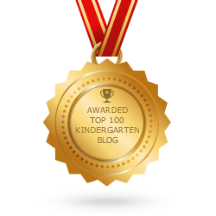 |
| Here are some of our monsters and one of our menus. |
I started by cutting squares of green construction paper to 7" X 7".
I created some monster pieces (like eyes, noses, scars, hair, necks with bolts, and mouths) and made a menu:
 |
| I gathered or made hair, eyes, noses, mouths, necks, and scars. |
 |
| Each item on this menu cost one cube. |
Then, I called up 4 students at a time and I gave them each 5 cubes, counters, or plastic coins to use as money.
 |
| Each of the 4 children I met with used a different colored set of five cubes so I could keep track of how many cubes each child gave me. |
You can also use any counting blocks or play coins.
 |
| You can use stacking counters for money. |
 |
| Plastic coins are always fun for children to use as they shop for pieces for their monsters. |
 |
| This menu used 1 cent instead of 1 cube for each item. |
Some students bought hair, some did not. The ones who bought hair got to decide if they wanted the hair to point down like bangs or up like spiked hair.
Some bought a scar to use on the side of their monster's face. Some used the scar as a mouth.
If they bought a yarn mouth, they got to decide if they wanted the mouth to smile or frown.
Each monster looked different from the others, but they all cost 5 cubes.
We put them up in the school showcase.
 |
| Our monsters look great in the showcase along with our stories. |
 |
| We displayed our menu in the showcase too. I love how each monster looks different. |
You can add more parts or increase the prices of the items to make it work for your own class.
I have shopping receipt templates for 3 other stores:
Meow Mall: Students shop for parts to decorate their black cats.
Snowman Shop: Students shop for parts to decorate their snowmen.
Leprechaun Store: Students shop for parts to decorate their leprechauns.
The Common Core State Standards call for real world math. Shopping is as real as it gets, even at the Monster Mall! Here are the CCSS covered in this lesson:
- CCSS.Math.Content.K.CC.B.4 Understand the relationship between numbers and quantities; connect counting to cardinality.
- CCSS.Math.Content.K.CC.B.4a When counting objects, say the number names in the standard order, pairing each object with one and only one number name and each number name with one and only one object.
- CCSS.Math.Content.K.CC.B.4b Understand that the last number name said tells the number of objects counted. The number of objects is the same regardless of their arrangement or the order in which they were counted.
- CCSS.Math.Content.K.CC.B.4c Understand that each successive number name refers to a quantity that is one larger.
Visit our Teachers Pay Teachers Store HERE.
Visit our Facebook Page Right HERE.
Visit our Pinterest Boards over Here.
And visit us again right here at our blog where we "keep the FUN in the FUNdamentals!"








































































